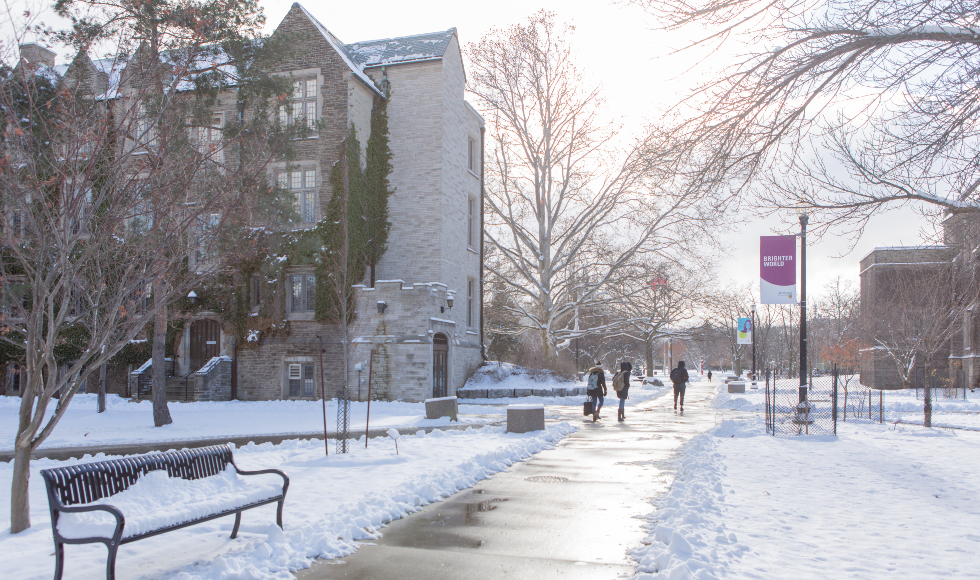Stormy weather: How McMaster decides to call a snow day

Photo by Sarah Janes
It’s one of the most pressing questions of the winter season: “Is today a snow day?”
McMaster is home to more than 30,000 students and 7,500 faculty and staff, so a decision to close the university due to inclement weather affects a significant number of people.
“When we need to close, we know it has a real impact on our students and their academic schedules including tests, exams, assignments and lessons, and it impacts our faculty and staff as they come to campus” says president David Farrar. “The decision to close involves several people and is influenced by a number of factors. Our top priority is the safety of our students, faculty and staff.”
Senior staff at the university are guided by the university’s storm policy when inclement weather is forecast.
McMaster will close when severe weather poses a danger to students, staff and faculty who are already on campus, or if severe weather will prevent large numbers of them from coming to campus or returning safely to their homes.
Farrar says the university considers several factors when making a closure decision. Staff members review the condition of the campus roads and walkways, the state of the city roads and streets coming to campus, the impact of weather on public transit scheduling and the forecast for worsening conditions.
“We also weigh the consequences of local school closures, knowing the impact those closures will have on students and staff members with school-aged children.”
The goal is to decide whether to close as early in the day as possible, with an aim of informing the community as close to 5:30 am as feasible.
“On one occasion last year, we decided to close for the day even though there was no active weather at the time,” Farrar says. “We based our decision on the weather forecasts with the expectation that stormy weather would materialize.”
Sometimes the forecast and weather don’t follow an early morning timeline. In some cases, the university closes midday or later in the afternoon. When that decision is made, Farrar says the goal is to make it as early as possible so that students and staff travelling to campus can be alerted prior to leaving home.
“While we do try to make informed decisions early, there are situations when we need a little extra time to decide what is best. It is important for the community to follow us on social media, download the McMaster SafetyApp or visit the website to stay up-to-date.”
Regardless of the university’s decision to remain open or to close, individual students and staff members need to assess their own strategies for getting to campus and home again and make good decisions with regard to their own commuting safety.
The university encourages faculty members and staff supervisors to take weather conditions into consideration when students and staff remain home on a bad weather day.
Farrar says with the changing climate and greater uncertainty about weather patterns, there could be more frequent severe and unpredictable storms. The university is working to find ways of providing some flexibility in academic calendars to account for closures and disruptions due to weather.
Stay updated:


